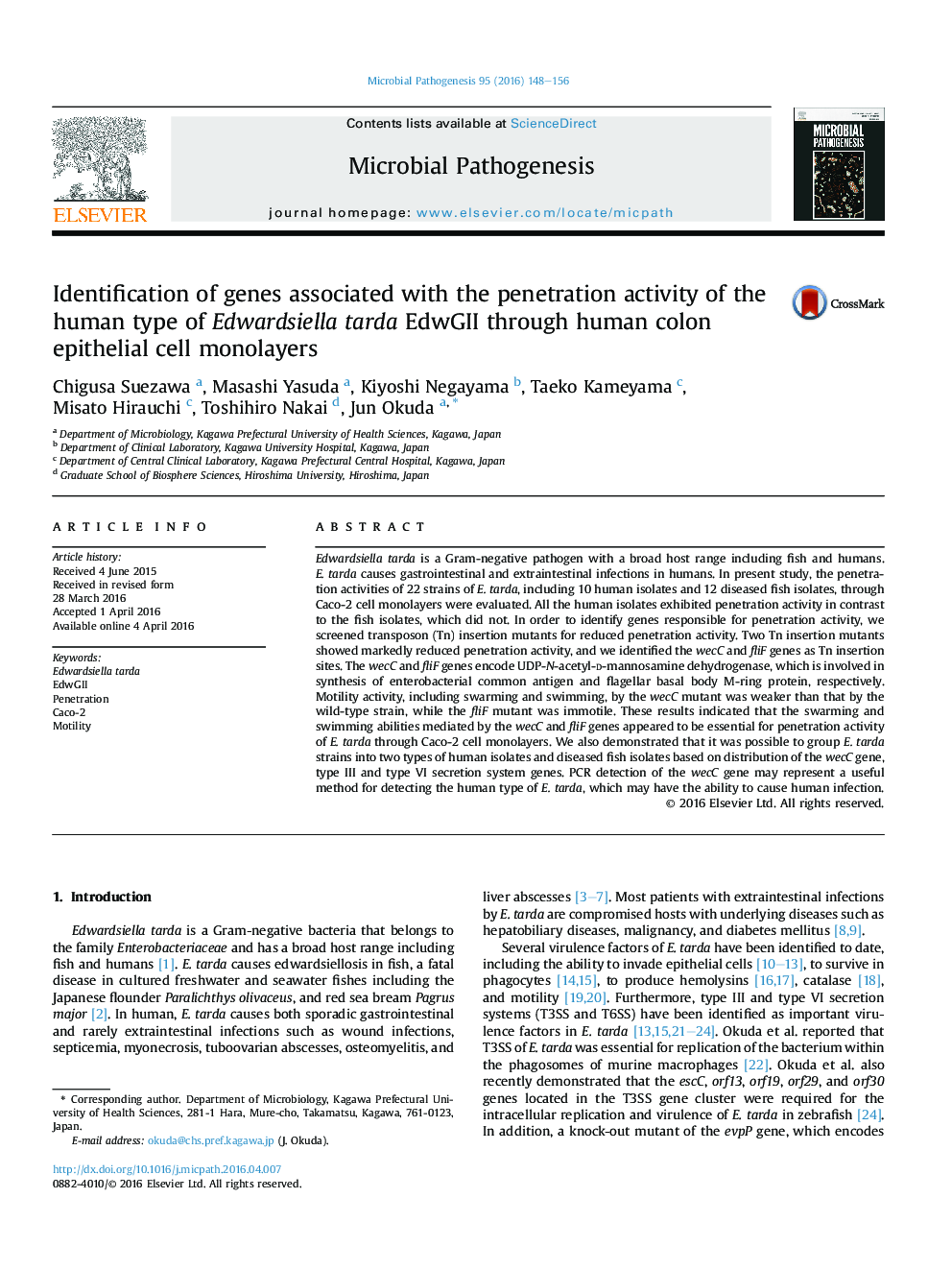| کد مقاله | کد نشریه | سال انتشار | مقاله انگلیسی | نسخه تمام متن |
|---|---|---|---|---|
| 3416251 | 1593694 | 2016 | 9 صفحه PDF | دانلود رایگان |

• A penetration assay using Caco-2 cell was carried out on 22 strains of Edwardsiella tarda.
• All human isolates exhibited penetration activity in contrast to the fish isolates.
• We identified the wecC and fliF genes as related genes with penetration activity.
• Motility mediated by these genes appeared to be essential for penetration activity.
• The wecC gene could differentiate human isolates from fish isolates by PCR method.
Edwardsiella tarda is a Gram-negative pathogen with a broad host range including fish and humans. E. tarda causes gastrointestinal and extraintestinal infections in humans. In present study, the penetration activities of 22 strains of E. tarda, including 10 human isolates and 12 diseased fish isolates, through Caco-2 cell monolayers were evaluated. All the human isolates exhibited penetration activity in contrast to the fish isolates, which did not. In order to identify genes responsible for penetration activity, we screened transposon (Tn) insertion mutants for reduced penetration activity. Two Tn insertion mutants showed markedly reduced penetration activity, and we identified the wecC and fliF genes as Tn insertion sites. The wecC and fliF genes encode UDP-N-acetyl-d-mannosamine dehydrogenase, which is involved in synthesis of enterobacterial common antigen and flagellar basal body M-ring protein, respectively. Motility activity, including swarming and swimming, by the wecC mutant was weaker than that by the wild-type strain, while the fliF mutant was immotile. These results indicated that the swarming and swimming abilities mediated by the wecC and fliF genes appeared to be essential for penetration activity of E. tarda through Caco-2 cell monolayers. We also demonstrated that it was possible to group E. tarda strains into two types of human isolates and diseased fish isolates based on distribution of the wecC gene, type III and type VI secretion system genes. PCR detection of the wecC gene may represent a useful method for detecting the human type of E. tarda, which may have the ability to cause human infection.
Journal: Microbial Pathogenesis - Volume 95, June 2016, Pages 148–156